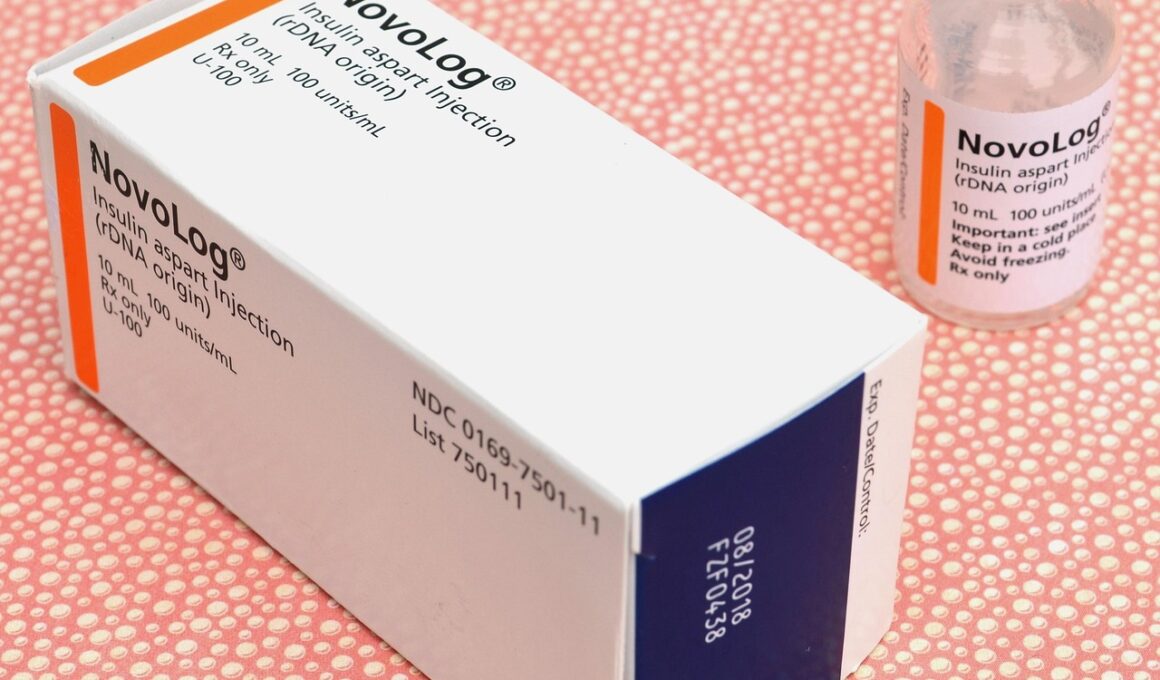How to Handle Insulin Overdose in Dogs
Owners of dogs with diabetes must be vigilant about the insulin dosage administered. Insulin overdose can result in severe health complications. If you suspect your dog has received too much insulin, immediate action and awareness are necessary. Recognizing the symptoms of insulin overdose is crucial. Symptoms may include weakness, disorientation, and seizures. Your dog may also exhibit unusual behavior, such as excessive drooling or unsteady walking. Pay close attention to these signs, as early detection can significantly influence recovery. It is essential to have a well-thought-out first-aid plan in place. Always consult your veterinarian regarding the specific insulin regimen and emergency measures. Gather all required materials for administering quick treatments. Having a glucose source readily available, like corn syrup or glucose tablets, can be lifesaving. Familiarize yourself with your dog’s insulin dosage schedule to prevent accidental overdoses. Keep insulin supplies in a secure location, maintaining proper storage for consistency. When managing diabetic emergencies, ensure you have contact information for your veterinarian available. Create a list of emergency clinics that operate during off-hours for rapid access. A proactive approach can ensure your pet receives necessary treatment effectively.
In response to insulin overdose, administering a quick source of sugar can be critical. If your dog shows mild signs of overdose, the first step is to offer a sugary food item. Options can include honey, syrup, or even sugary soft drinks, as long as they do not contain harmful ingredients for dogs. Be cautious in selecting items just to avoid any allergic reactions or negative effects. The goal is to raise your dog’s blood glucose levels swiftly. Monitor their behavior closely after giving sugar, watching for improvement in coordination and energy levels. If their condition does not improve or worsens, contacting your veterinarian immediately is essential. They may recommend further treatments or ask you to bring your dog in for evaluation. In cases where symptoms escalate, such as severe seizures or unconsciousness, calling emergency services is imperative. The staff can guide you on administering further care during the transport to the clinic. Keeping your calm during these emergencies will help your dog feel more assured and secure. Every dog owner should educate themselves on diabetic emergencies. A small investment in knowledge can save a life when needed.
Recognizing the Symptoms
Recognizing the symptoms indicative of an insulin overdose can be life-saving. Changes in behavior, such as pacing or agitation, may signify that something is not right. Additionally, monitor physical signs including excessive panting, trembling, and muscle twitching. If your dog appears lethargic, it could indicate a dangerous drop in blood sugar levels. Keep track of these signs, as they may vary depending on the size and breed of your pet. If your dog exhibits symptoms such as confusion or difficulty standing, this requires immediate action. Performing a quick evaluation may help determine if a sugar source is needed. If an emergency arises, documenting any previous insulin dosage and timing helps the veterinarians. Your prompt action and observations can greatly assist with the diagnosis. Always maintain a record of any changes in your dog’s behavior after an insulin injection. This information can guide your veterinarian in adjusting the treatment. Encouraging other pet owners to understand diabetic management is equally vital. Share tips and experiences, creating a community focused on better care for diabetic dogs. Resources from veterinarians can enhance well-being for your furry companions.
In situations where insulin overdose is suspected, prevention plays a vital role. Diabetic pets require consistent monitoring to avoid critical errors. Make a practice of double-checking insulin dosages before giving them. Having a set schedule for administering insulin can help maintain a routine, reducing chances for mistakes. Establishing a communication routine with a veterinarian is key. Regular check-ups can help tune insulin requirements based on any dietary changes or health conditions. Utilizing pet-friendly apps to track insulin administration can be immensely beneficial. Technology allows pet owners to set reminders and alerts for administration times. Organizing insulin syringes and supplies in a specific location can streamline the process. Ensuring that family members also understand the protocols prevents accidental overdoses. Those who regularly interact with the dog must know about their medication. Educating others can foster a better living environment for a diabetic pet. Keeping emergency supplies handy can lead to timely actions during a crisis. Always have glucose monitor equipment ready to check blood sugar levels when fluctuations are suspected. Every dog deserves care, attention, and the right resources to thrive even while managing diabetes.
Emergency Contacts and Support
During diabetic emergencies, having a list of emergency contacts is essential. Compile a detailed list of veterinary clinics with after-hours support. Include the contact numbers of reliable emergency hospitals nearby. Familiarizing yourself with these resources before a crisis can make a significant difference during stressful moments. In addition, consider building a network with other dog owners in your community. Sharing experiences and knowledge can lead to better preparedness when emergencies occur. The emotional support from understanding friends can help ease anxiety during challenging situations. Online pet owner forums often provide valuable insight and foster connections among dog lovers. Share personal stories, tips, and advice regarding diabetes management. Consider investing in pet first-aid training or attending workshops. Becoming certified can make you more confident in dealing with emergencies, should they arise. Many organizations offer these classes to help pet owners stay informed. Learning how to handle many medical situations allows for more effective coping. Never hesitate to reach out for help from your veterinarian when dealing with a diabetic emergency. They will have valuable resources and knowledge that can guide you through the process smoothly.
Being educated about insulin overdose can lead to better management of diabetic conditions. Knowing the correct procedures can prevent panic during a crisis. Begin by discussing a comprehensive first-aid plan with your veterinarian. Understand when to react and when professional intervention is necessary. Address potential complications along with preventive measures. Keeping an emergency kit can ensure you are always prepared. Store essential items like glucose, syringes, and even a first-aid manual in an accessible area. In addition, consider outfitting your dog with a medical alert collar. This collar can inform bystanders and emergency personnel that your dog has diabetes, aiding in the treatment process. Informing caregivers and friends about your dog’s health also ensures a larger support system. Creating a communication network among your circle can foster a community of care around your diabetic dog. Relying on non-veterinary sources like blogs and forums should supplement, not replace, official vet advice. Ensure information acquired is accurate and responsible. Ultimately, your dog’s safety is top priority. Empowering yourself with knowledge allows you to take charge during critical situations.
Conclusion and Continued Awareness
Understanding how to handle insulin overdose in dogs is an essential skill for every dog owner, especially those with diabetic pets. Continual education and preparedness can help you respond effectively during emergencies. Build a solid foundation of knowledge surrounding diabetes management to ensure your dog’s health and safety. Attending regular veterinary check-ups is vital for monitoring your pet’s health. Awareness of diabetic therapies changes helps adjust treatment plans accordingly while enhancing quality of life. Engaging with other pet owners fosters a sense of community and shared knowledge. Building relationships often provides emotional support through stressful situations. In addition, consider volunteering or participating in forums that address canine health issues. Staying informed about changes in veterinary health care can be enlightening. Always be proactive by gathering resources, tips, and guidance on best practices. Join pet organizations focused on improving overall pet care—creating a connection between owners can lead to better outcomes. Document your pet’s daily behaviors and fluctuations to share with your veterinarian, helping them tailor their care. By actively engaging in your dog’s health journey, you can navigate both daily and emergency situations more effectively.
In summary, managing canine diabetes proves to be a significant responsibility. Recognizing symptoms of insulin overdose while being educated about proper interventions creates a safer environment. Always prioritize establishing a comprehensive first-aid plan and connecting with supportive networks of other pet owners. With the right preparation in place, addressing emergencies will become easier. Observing your dog’s behavior and swiftly responding ensures good outcomes. Share your experiences with others, as this knowledge may help save another dog’s life. More importantly, remain calm, as your demeanor can reassure your pet during a crisis. With time and experience, handling diabetic emergencies will become more familiar and less daunting.


